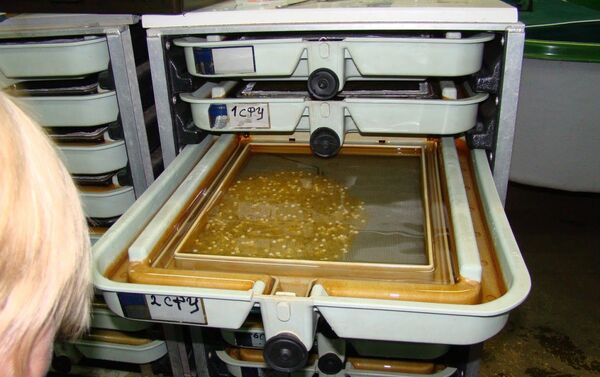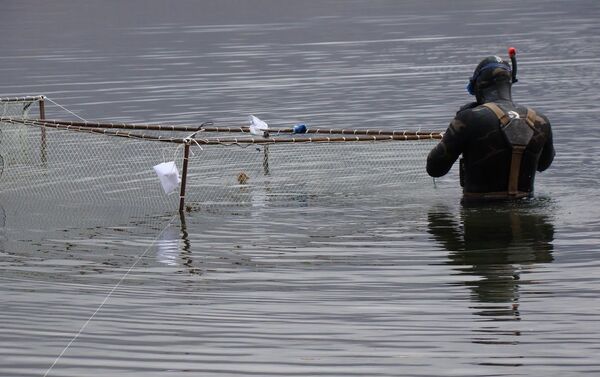The researchers claim that this study would help breed it in aquaculture and make it an affordable food product, as these species contain a record amount of omega-3s and are the healthiest fish in the world, the university press service reported.
The scientists from the Siberian Federal University conducted an expedition to Lake Sobachye in the Taymyr Peninsula to study the life habits of the charr (Salvelinus boganidae). Experts noted that now it lives exclusively in natural bodies of water.
According to researchers, if people catch Salvelinus boganidae in the northern lakes, they will destroy the entire population very quickly. An alternative solution is to find out what makes it so unique and try to recreate, as closely as possible, the conditions that would allow the fish to reproduce well while maintaining maximum beneficial properties.
“This is a very rare fish. Our task was to study the biochemical and genetic characteristics of charr, to study its diet, as well as to take the biomaterial from males and females for an experiment in breeding charr in aquaculture,” Anastasia Rudchenko, an assistant professor of the Department of Water and Terrestrial Ecosystems at the Siberian Federal University, said.
She explained that scientists used humane methods to select caviar: all manipulations with fish were performed under anaesthesia, and afterwards the charr donors were released back into the lake.
“The resulting caviar was artificially fertilised and delivered to the Norilsk fish hatchery, where it will be grown once the incubation is over, meaning that the future generation will have to grow and participate in subsequent experiments in early spring,” Rudchenko said.
According to her, the main difficulty is that the “cultured” charr maintains a high polyunsaturated fatty acids (PUFA) content. Scientists need to find out what has a greater influence on the ability to store them in the fish body. It could be linked to diet: the small fish that the charr hunts in Taymyr lakes eat special algae, rich in nutrients. Or the fish has gradually changed during the evolutionary process so that it can now produce fatty acids on its own.




“We are just beginning to study the genetic ability of these species to synthesise omega-3 acids. One of the fundamental tasks for the future is to develop wholesome fodder for charr that will breed in a fishery. Our team includes geneticists, hydrobiologists, ichthyologists and fish farmers – it is important to approach the charr cultivation comprehensively,” Anastasia Rudchenko concluded.
The scientists believe that expeditions and the research of this species at all levels will yield good results. In the long run, the researchers plan that the dishes made of charr will be included in the weekly menus of Russian citizens. According to them, it will be an excellent measure to prevent cardiovascular diseases that claim thousands of lives each year.
Scientists from the Siberian Federal University and the Institute of Biophysics of the Siberian Branch of the Russian Academy of Sciences proved as early as 2018 that charr is the healthiest fish in the world, the university press service said.
According to experts, its secret lies in its high omega-3 content, which is responsible for the health of the cardiovascular and nervous systems, youth and beautiful skin, the prevention of degenerative changes in the brain and obesity. For example, it is enough for you to eat only some 35 grams of charr’s fillet to cover your daily need for omega-3, whereas you would have to consume as much as 12 kilos of the usual tilapia familiar to city residents to achieve the same result.
The study was carried out jointly with specialists from the Yenisei branch of Glavrybvod Federal State Budgetary Institution and the Institute of Biophysics of the Siberian Branch of the Russian Academy of Sciences.

